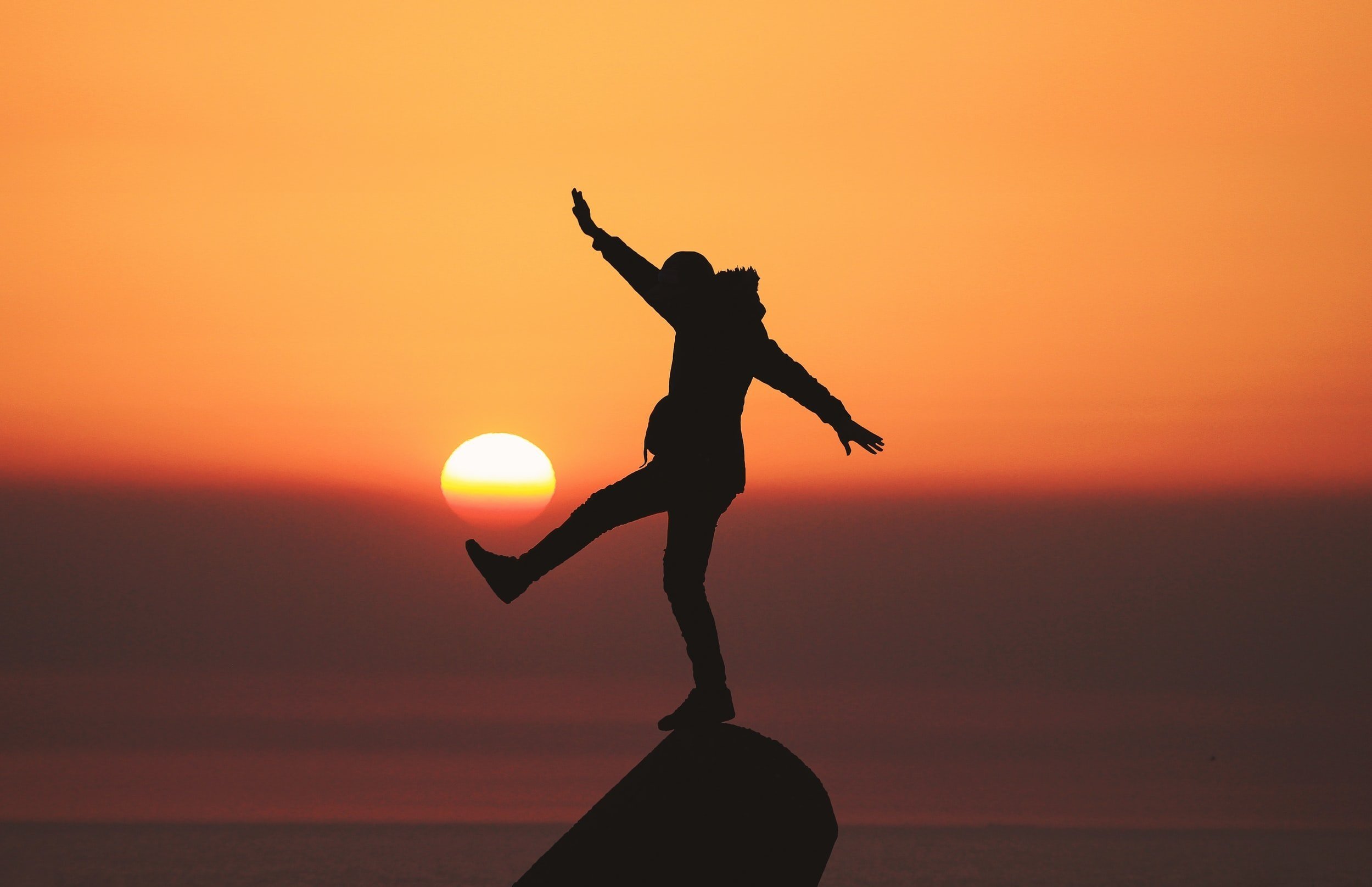BALANCE IS THE PROCESS OF COMING BACK TO THE MIDDLE
Image Credit: Unsplash
Standing on one leg, you will wobble. This is inescapable.
The ankle quivers side to side. You will feel “off,” and you will effort in attempts to balance. This is normal, but the brain might have a judgement like, “you suck.” But the wobble is the muscle re-learning and gaining new strength. This is good! Balance is the process of coming back to the middle.
The same is true in life. Wobble will be inherent while practicing new behaviors and creating new neuropathways. You may feel “off” in the efforting and the brain may be too quick to distract with the thought,
“Just give up. This won’t work.”
It is wise to remember there is no actual place where balance or stability is there. Balance is a constant recalibration. Balance is the practice of return; of trying repeatedly and knowing that strength (and new neuropathways) is growing due to the efforts. The reward is in the return.
In the field of yoga and ayurveda, we view this as the qualities of the three primary aspects of energy matter and consciousness, called the gunas: tamas, rajas, sattva, with sattva being the state of balance. I have a previous blog that goes into detail on these gunas and on maintaining sattva here.>> I have a feeling that many of us might be stuck in a place of “not balance.” Just like sometimes tires get stuck in a deep groove in icy packed snow and can’t gain traction, sometimes we get stuck in a place of too much activity (rajas) or a place of inertia (tamas). So, this blog is advice on getting unstuck from the extremes and coming back to the middle.
Balancing doing “too much”
Recently, I listened to an old episode of a podcast called “Death, Sex, and Money” which was an interview with Ellen Burstyn and her lessons on survival. The interviewer inquired how she continued to work so intensely at the age of eighty-one. Ellen admitted that while she enjoys working and feels good at it, she has the tendency to do too much in a week. Therefore, she employs “shouldless days.” This is a day where there is nothing she “needs” to do, only what she “wants” to do. This might be a nap, eating ice cream, or watch TV. She does this to counter the over-working to come back to the middle. In the interview she shares the following:
“God you’re so lazy—can’t imagine whose voice that is? And that wiring is there. I haven’t been able to get rid of it. But what I can do is I can put in another wiring, I can put in should-less days, so when that voice goes off and says you’re being lazy, I turn to the other wiring in my brain that says, no, this is a should-less day, and I’m doing what I want.”
In an ideal world, Sundays would be “shouldless days” for me. This would be a guilt-free day involving coffee, hiking, brunch, music, sunshine, reading, a walk, good company, or no company ... all the above, some of it, or none.
If life has felt like a sprint, we need to re-find the middle or a “base-pace.” In jogging, a “base pace” is where you can hold a brief conversation with someone else. In life, a “base pace” could be considered where we can make the time to hold space for a spontaneous conversation with another person in our day.
Balancing doing “too little”
While some of us get stuck in doing too much, others might have difficulty getting started. In this extreme, we may feel we “just can’t.” When struggle with inertia, or tamas, we are we are wise to remember that energy follows action. Despite “not wanting to,” our “wanting to” will come after the action begins. This means “just do it.” Or “act as if” you want to or believe you can. Leaving inertia to come back to the middle looks like doing that thing on the to-do list that the mind is resisting. But it also might mean engaging the layer of the body that will encourage the layer of the mind. At times, moving the body “burns off” lethargy and dullness. Maybe you take a brief walk at a quick pace and upon return bring that energy right into your task. Maybe you get off the couch and dance to your current favorite song. At any rate, move into the work to find balance.
Whether you are practicing a “shouldless day” or are embarking on a workout to get your energy flowing – find balance. The practice of balance is the process of coming back to the middle from the extremes. Practice balance and reap the rewards that your mind and body will thank you for.


